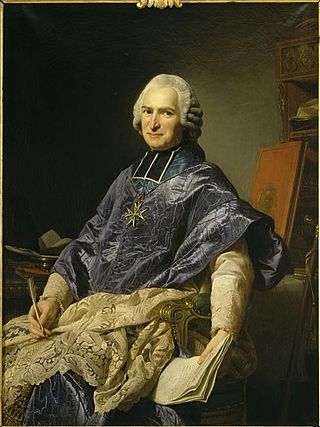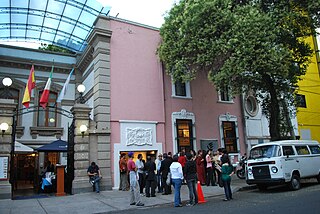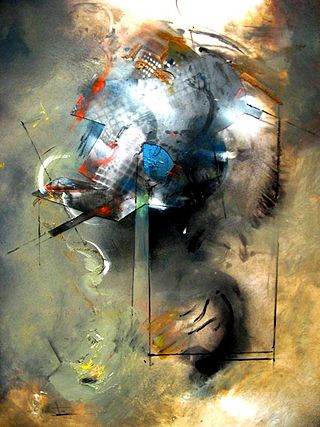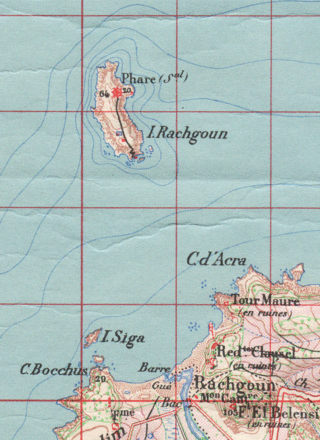
Étienne François, marquis de Stainville, duc de Choiseul, KOHS, OGF was a French military officer, diplomat and statesman. From 1758 to 1761 and from 1766 to 1770, he was Foreign Minister of France and had a strong influence on France's global strategy throughout the period. He is closely associated with France's defeat in the Seven Years' War and subsequent efforts to rebuild French prestige.

Claude-Joseph Vernet was a French painter. His son, Antoine Charles Horace Vernet, was also a painter.

Abbot Joseph Marie Terray was a Controller-General of Finances during the reign of Louis XV of France, an agent of fiscal reform.

Arnold Belkin was a Canadian-Mexican painter credited for continuing the Mexican muralism tradition at a time when many Mexican painters were shifting away from it. Born and raised in western Canada, he trained as an artist there but was not drawn to traditional Canadian art. Instead he was inspired by images of Diego Rivera's work in a magazine to move to Mexico when he was only eighteen. He studied further in Mexico, focusing his education and his career mostly on murals, creating a type of work he called a "portable mural" as a way to adapt it to new architectural style. He also had a successful career creating canvas works as well with several notable series of paintings. He spent most of his life and career in Mexico except for a stay in New York City in the late 1960s to mid-1970s. His best known works are the murals he created for the University Autónoma Metropolitana in the Iztapalapa borough of Mexico City.

The Château de Madame du Barry in Louveciennes, in the Yvelines département of France, is a château constructed at the end of the 17th century. It was then expanded and redecorated in the middle of the 18th century by Ange-Jacques Gabriel for Madame du Barry. The estate's most famous building is the Pavillon de Musique, a music and reception pavilion constructed by Claude Nicolas Ledoux (1770–71). The pavilion sits in the middle of a park that was designed in the 19th century.

Luis Paret y Alcázar was a Spanish painter of the late-Baroque or Rococo period.

Antonio de Pereda y Salgado was a Spanish Baroque-era painter, best known for his still lifes.

Jorge González Camarena was a Mexican painter, muralist and sculptor. He is best known for his mural work, as part of the Mexican muralism movement, although his work is distinct from the main names associated with it. His major works include the mural on the main administration building of the Monterrey Institute of Technology and Higher Studies and a mural created for the Universidad de Concepción in Chile. He also created easel works, one of which, La Patria, was well known in Mexico as it was used on the cover of free textbooks from the 1960s into the 1970s. Recognitions for his work include the Premio Nacional de Arte, membership in the Academia de Artes and the Ordine al Merito della Repubblica Italiana, grade Commendatore from the Italian government.

Salón de la Plástica Mexicana is an institution dedicated to the promotion of Mexican contemporary art. It was established in 1949 to expand the Mexican art market. Its first location was in historic center of the city but today it mostly operates out of a building in Colonia Roma. The institution is run by a membership of almost four hundred recognized artists and holds multiple exhibitions each year. Although it operates autonomously, it is part of the Instituto Nacional de Bellas Artes y Literatura.
The third annual Altazor Awards took place on March 25, 2002, at the Museo Nacional de Bellas Artes.

Miguel Pou Becerra was a Puerto Rican oil canvas painter, draftsman, and art professor. Together with José Campeche and Francisco Oller, he has been called "one of Puerto Rico's greatest masters." He was an exponent of the impressionist movement. During his life he exhibited in 64 shows, of which 17 were solo, and won five gold medals.

Generación de la Ruptura is the name given by art critic Teresa del Conde to the generation of Mexican artists against the established Mexican School of Painting, more commonly called Mexican muralism post World War II. It began with the criticisms of José Luis Cuevas in the early 1950s, followed by others who thought the established art had become dogmatic, formulaic and nationalistic and the artists too deferential to the government. This new generation of artists was not bound by a particular artistic style but was more interested in personal rather than social issues and influenced by a number of international trends in art such as Abstract expressionism. Early reaction to them was strong and negative but by the end of the 1950s, they had succeeded in having their art shown in the major venues of Mexico. The Generación de la Ruptura had influence on other arts in Mexico, such as literature but it did not end the production of murals in Mexico with social and nationalist purposes.
Gustavo Arias Murueta was a Mexican painter, sculptor and poet, a member of the Salón de la Plástica Mexicana best known for his work in drawing, graphic arts and oil painting. He originally studied architecture at the Universidad Nacional Autónoma de México where he met artists such as Rufino Tamayo, David Alfaro Siqueiros and José Clemente Orozco. In the 1950s, he began to produce artworks, with his first exhibition in 1961. From then until his death he had a career as an artist with individual and collective exhibitions in both Mexico and abroad. While his work had been heavily influenced by Orozco, he was considered part of the Generación de la Ruptura movement.

Chilean art refers to all kinds of visual art developed in Chile, or by Chileans, from the arrival of the Spanish conquerors to the modern day. It also includes the native pre-Columbian pictorial expression on modern Chilean territory.

Fernando Brambila, or Ferdinando Brambilla, was an Italian painter and engraver who spent most of his life in Spain, where he worked for the Royal Court. He is best known for his participation in the Malaspina Expedition.

Four Times of the Day is a series of four paintings depicting four times of the day: Morning, Midday, Evening, and Night by the French landscape painter Claude Joseph Vernet (1714–1789).
The Views of the Ports of France are a series of oil paintings on canvas by French painter Claude-Joseph Vernet, made between 1754 and 1765 to answer a requirement by King Louis XV. Representing ten harbours, they were meant to document and promote commerce and naval service.

Eugenio Landesio (1810–1879) was an Italian painter and a pupil of the Hungarian landscape painter Károly Markó the Elder. Landesio’s career in Mexico was marked by his years at the Academy of San Carlos, where he exercised an influence on later exponents of Mexican landscape painting such as José María Velasco.

The Flight into Egypt is a 1647–1650 oil on canvas painting by Bartolomé Esteban Murillo, which since 1948 has been in the Detroit Institute of Arts. It shows the flight into Egypt, a popular motif in Christian art from the 14th century onwards. It first appears in the written record whilst in the collection of Sir William Chapman in London, passing through other British collections until its sale at Christie's in London in 1945. It was bought by Maurice Harris, who took it to New York and donated it to its present home later that decade.

The Island of Limacos or Island of Caracoles, known in Spanish in the 16th century as Risgol and in French as Île de Rachgoun is an Algerian islet located near the North African coast. It has an area of about 66 hectares and it is uninhabited. It is located in front of the mouth of the Tafna River, where the town of Rashgun is located. It is approximately halfway between Oran and the border between Algeria and Morocco. It was literarily described, along with other islets on the Maghreb coast, by the writer Pedro Mata as "one of those sea monsters sentinel that deflower the surface of the sea at various points" in his 1856 work Los moros del Riff o el presidiario de las Alhucemas.
















